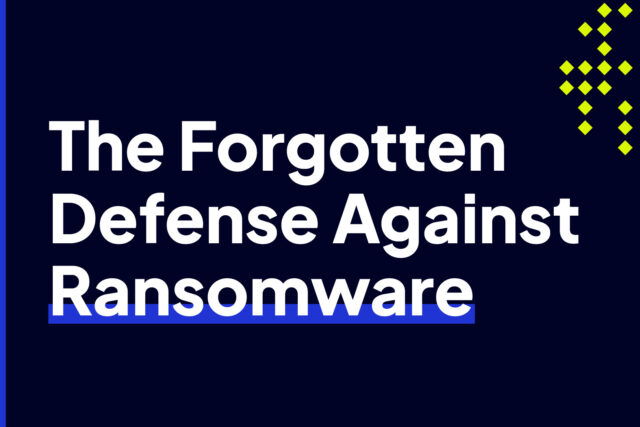
Our Top 3 Firewall Picks
A firewall is a device that controls the flow of data on your network. It is meant to allow safe traffic while blocking harmful connections. There are dozens of options available, and it can make picking the right one for your organization overwhelming. In this article, we’ll talk about our top three picks for current firewalls on the market.
1) Palo Alto
The Palo Alto Firewall is an enterprise-level solution that provides security for organizations of any size. It provides a number of features that make it an attractive solution for organizations. It’s designed to protect against external threats, including malware, phishing attacks and zero-day vulnerabilities. Palo Alto includes built-in threat intelligence and traffic segmenting to detect threats as they happen. It allows real-time data from millions of sensors across the globe and provides visibility into all devices within your organization to protect against threats.
While Palo Alto is considered one of the best solutions in its class, it does have some downsides. It was designed to be a high-end, enterprise-level solution for large companies, and it is quite expensive compared to other firewalls available. Palo Alto can take months to configure and if not done properly it can cause serious problems in your network. Palo Alto is not open source so without the ability to independently audit its code you can’t verify that the software isn’t vulnerable. Although rare, there have been reports of hacks against the firewall.
2) pfSense
pfSense Firewall is the world’s most advanced open-source firewall. It has been widely praised for its flexibility, performance, and reliability. It’s used by hundreds of thousands of organizations around the globe—including Fortune 500 companies, national governments, and universities—to manage their networks.
The pfSense interface is easy to use and has an excellent reporting system that allows you to view all activity on your network in real-time with advanced network statistics and metrics. It supports many different types of hardware devices with a wide range of software packages and features that can be configured according to individual needs. It is also a complete Intrusion Prevention System (IPS) to provide real-time protection against emerging threats. It is regularly updated with new threat definitions as they become known.
While pfSense is an excellent product, it does have some drawbacks. It is not as polished as Palo Alto and other corporate solutions, which can be a problem for users who are used to a more refined UI. It also doesn’t have as large of a budget to build proprietary, custom features for its customers like Palo Alto or other private solutions. However, pfSense offers a great deal of flexibility in terms of customization options, so many users are willing to overlook this.
3) Cisco ASA
Cisco is a well-known and trusted name in the cybersecurity industry. Their ASA firewall products are still widely used and continue to have a large installation base despite having reached end-of-life nearly two years ago. The Cisco ASA firewall is an integrated security system that provides protection against malware, viruses, spyware, and other forms of malicious threats. The Cisco ASA has several features that make it a good choice for small businesses with limited IT resources and it integrates easily with Cisco Umbrella.
If you are using the Cisco ASA firewall, you should be aware of the risks. Since the product reached its end-of-life in 2021 there are no longer any security updates or support from Cisco, so new vulnerabilities could be discovered at any time. Additionally, you may have difficulty finding replacement parts if something breaks.
If you’re looking for a reliable, established solution that will work well in most environments, this is an excellent choice. However, if you need something more state of the art, you may want to look elsewhere.
Intrusion Shield and Your Firewall
Even if your organization is using the most state-of-the-art firewall, it can still be compromised if the rulesets or threat definitions are out of date. If you want to achieve the highest level of network security, then it is best practice to use a combination of solutions. Intrusion Shield can work with your existing firewall to create in-depth threat protections for your network.
Firewalls and their rules work best against predictable threats and in minimizing known risks, but if a threat is new or unknown, it can easily bypass a system that isn’t updated to block it. A reputation-based IP threat intelligence tool like Intrusion Shield monitors a network’s outgoing connections in real-time.
Shield’s algorithms, with decades of IP reputation data, evaluate the risk level of billions of IP addresses. It can catch ransomware, malware, and other threats that have slipped past a network’s firewall by recognizing and preventing outgoing connection attempts to known high-risk IP addresses. This data can then be used to update a firewall’s ruleset to prevent future inbound connections from known threats.
For more information on Intrusion Shield and firewalls check out our article Intrusion Shield vs a Firewall.
Our Recommendation
Cybersecurity is a complex issue, and there is no single silver bullet solution. The best way to protect your organization is to employ a defense-in-depth approach, using multiple layers of security.
The combination we recommend is using Intrusion Shield alongside the pfSense firewall. Intrusion Shield provides excellent protection against ransomware, malware, and other malicious software, while PfSense is a powerful and customizable open-source firewall. By using both solutions, you can take advantage of each one’s strengths to create a more secure environment.
If you would like to learn more about Intrusion Shield and how it can improve your organization’s network security, please contact us today.

